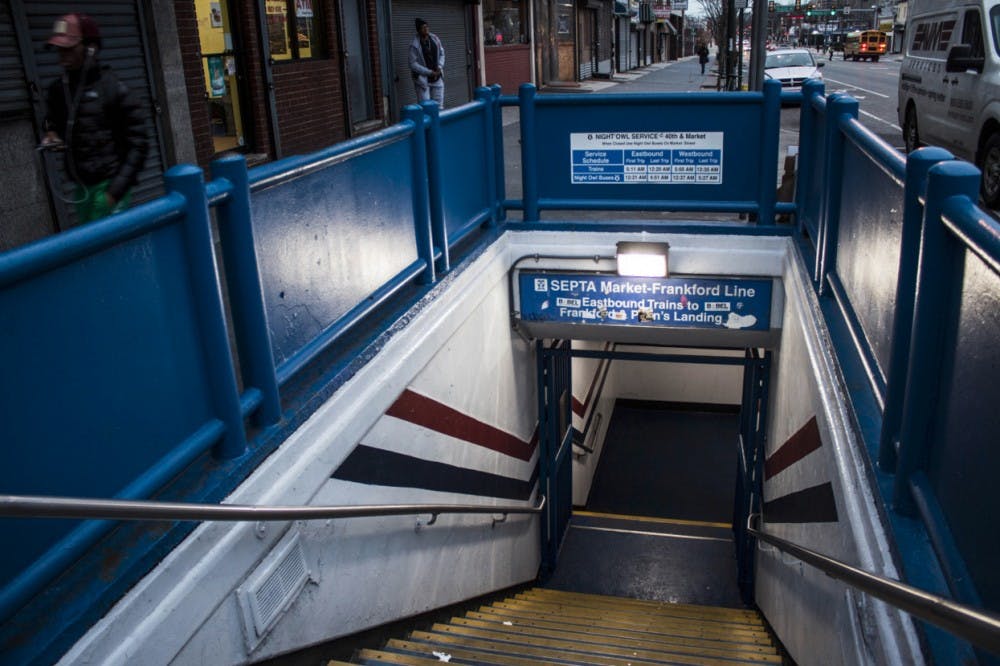
SEPTA is looking to implement a number of improvements in the 2015-2016 fiscal year, but it seems as though the long-awaited Key program will not be one of them.
On Tuesday, SEPTA held two public hearings to seek input regarding their capital and operating budgets for next fiscal year. The hearings were held at SEPTA Headquarters at 1234 Market St., as part of their week-long series of meetings held in each of the five counties SEPTA services.
“The purpose of these meetings is to consider the authority’s fiscal budget for the 2015-2016 year and SEPTA’s five year plan,” SEPTA Operating Budgets Director Frank Gormley said at the beginning of the hearing.
For Fiscal Year 2016, running from July 1, 2015 to June 30, 2016, SEPTA proposed a $1.36 billion operating budget, a 2.8 percent increase over Fiscal Year 2015. The increase is largely attributed to a rise in wage costs, specifically the medical, dental and drug expenses for SEPTA’s roughly 9,000 employees. Other additional expenses include the implementation of permanent 24-hour weekend service on the Market-Frankford Line and Broad Street Line, as well as the purchase of more hybrid buses.
At Tuesday’s hearing, members of the public were invited to speak out to SEPTA officials and community members alike. A common concern amongst citizens was the timeline for the implementation of SEPTA’s Key program, which will allow riders to swipe a card as opposed to paying a cash fare or using tokens at the turnstile. Several local residents asked SEPTA officials when the Key program will be implemented, but the officials were reluctant to provide any details.
Although the operating budget will increase, fares for all SEPTA transportation will stay the same. Ridership is also expected to stay the same. The Authority, however, predicts passenger revenue to increase by $4.7 million. SEPTA has implemented regularly scheduled fare increases every three year since 2007, with the next one scheduled for 2016.
Other major East Coast cities, such as New York, Washington, D.C. and Boston, already implement some form of a card system, and many riders feel that this increases efficiency.
College freshman Simone Bank, a Staten Island native, prefers the New York subway and bus system to Philadelphia’s. The Metropolitan Transportation Authority, New York’s version of SEPTA, raised its subway and bus fare to $2.75 per ride in March. This is 50 cents more than Philadelphia’s subway and bus fare, but Bank prefers the efficiency of New York’s MetroCard.
“I would be less reluctant to use SEPTA if I no longer had to worry about whether or not I had or had access to tokens,” Bank said, adding that she felt the payment system was antiquated.
For more comparisons, in Boston the one way subway and bus fares are $2.65 and $2.19, respectively. Washington, D.C. runs on a different system, in which a rider pays a minimum of $2.15 on the subway with an increase depending on how far he or she goes. The city’s bus fare is fixed at $1.75.
SEPTA’s free transfer policy, in which you can transfer between the trolley lines and the Market-Frankford and Broad Street lines at no cost seems to be a popular aspect of SEPTA’s operations. College freshman Annie Grainge, who went to high school in Philadelphia, has had a lot of experience with SEPTA over the past several years.
Nursing freshman Delaney Lawson thinks that SEPTA could implement a system similar to D.C.’s to increase ridership. “Sometimes I feel like paying $2.25 is too expensive if I’m only going a few stops,” Lawson said. When visiting a friend in D.C. last semester, Lawson liked how the D.C. system worked.
“You pay for how much you utilize,” she said. “I felt that was interesting and something we could do here.”
Lawson also expressed approval with the transfer system. “I really like taking advantage of the cheap fare,” she said in regards to being able to travel a far distance with the free transfer.
A Massachusetts native, Lawson noted that Boston is similar to Philadelphia in price and how the system works, but she, like Bank, also prefers the card system that Boston implements. “I think tokens are hard to keep track of,” Lawson said, comparing them to loose change.
The expansion of service on the Market-Frankford and Broad Street lines was a result of a pilot program that SEPTA ran during summer 2014, SEPTA spokesperson Andrew Busch said. The program came from SEPTA’s “own assessment of demand in Center City and Philadelphia,” Busch said, citing a 50 percent or more increase in train riders who would otherwise be forced to take the bus during those hours.
With an increase in hours of operation naturally comes an increase in work personnel. SEPTA plans to hire 70 more workers across all departments. Many of the workers will be assigned to the new 24-hour subway lines that have been largely contingent on overtime workers, Busch said.
Starting in 2016, half of SEPTA’s busing fleet will be comprised of hybrid vehicles, SEPTA CFO Richard Burnfield said. SEPTA is looking to add 185 articulated buses (which bend in the middle) and 96 40-foot traditional buses. Implementing more hybrid buses will allow SEPTA to decrease diesel fuel usage.
Grainge used SEPTA’s 47 bus line to get to and from school, and she continues to use the trolley and subway lines for a number of reasons, including going home and going to her work-study job. “When I go home, I take the trolley and use the free transfer at 15th St. Station,” Grainge said. “In that sense, $2.25 is a good deal.”
The Daily Pennsylvanian is an independent, student-run newspaper. Please consider making a donation to support the coverage that shapes the University. Your generosity ensures a future of strong journalism at Penn.
DonatePlease note All comments are eligible for publication in The Daily Pennsylvanian.




